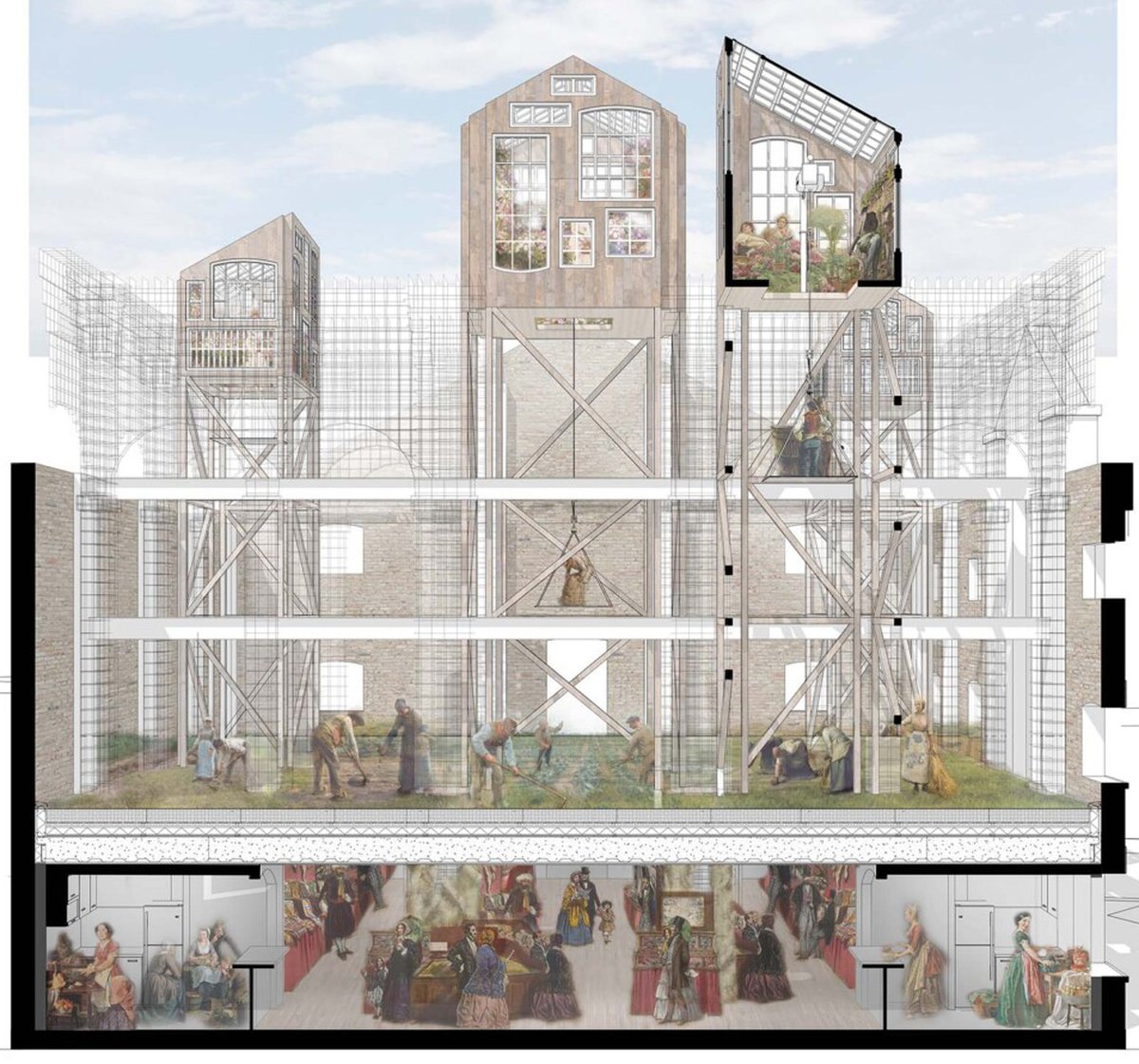2020-Jul-13 : Cultivating Architecture at Uni Brighton’s end-of-year show
After a turbulent (online) pre-view night (with live music!) on Friday 3rd July, the School of Architecture and Design’s end-of-year show is now open.
We were both not teaching this year but would like to share the Master’s of Architecture project of Casey Parsons who, this year, has been taught by our colleague Charles Holland. Casey’s project carries the intriguingly ambiguous title Cultivating Architecture and looks at ‘Nature’s Place Within the Built Environment’. Her detailed investigations into plants – including edibles – as ressources resulted in light-weight (and light-hearted) structures that can plug into and onto buildings in unexpected ways thereby provoking thoughts and discussions about the validity and possibilities of building-integrated agriculture.
We were both not teaching this year but would like to share the Master’s of Architecture project of Casey Parsons who, this year, has been taught by our colleague Charles Holland. Casey’s project carries the intriguingly ambiguous title Cultivating Architecture and looks at ‘Nature’s Place Within the Built Environment’. Her detailed investigations into plants – including edibles – as ressources resulted in light-weight (and light-hearted) structures that can plug into and onto buildings in unexpected ways thereby provoking thoughts and discussions about the validity and possibilities of building-integrated agriculture.

Cultivative Design: First phase of use: Sowing the Seed (image: Casey Parsons www 2020)
Casey writes:
‘The project reflects on the relationship between Man and Nature by blurring the boundary between the two ecosystems. […]
As the vegetation grows and interweaves itself within architectural detailing, the division between the built and natural environments become harder to differentiate. As Ivy grows into cracks in the walls and mycelium bonds to structural elements for support, the way in which space is inhabited and experienced drastically shifts, evolving its function within the community accordingly as it does so.
The scheme reacts against the conventional architectural notion of top-down design, whereby appearance is predetermined and then built. Instead, in this case the final form builds over time becoming directly rooted to the environment it sits within and delivering a sense of organised chaos to the process.
The project seeks to redefine urban farming systems, where organic materials are directly routed in the formation of the final structure. Tethering a link between the cityscape and the manufacturing of local food sources through the creation of a rooted market space within the community of Rye.’
‘The project reflects on the relationship between Man and Nature by blurring the boundary between the two ecosystems. […]
As the vegetation grows and interweaves itself within architectural detailing, the division between the built and natural environments become harder to differentiate. As Ivy grows into cracks in the walls and mycelium bonds to structural elements for support, the way in which space is inhabited and experienced drastically shifts, evolving its function within the community accordingly as it does so.
The scheme reacts against the conventional architectural notion of top-down design, whereby appearance is predetermined and then built. Instead, in this case the final form builds over time becoming directly rooted to the environment it sits within and delivering a sense of organised chaos to the process.
The project seeks to redefine urban farming systems, where organic materials are directly routed in the formation of the final structure. Tethering a link between the cityscape and the manufacturing of local food sources through the creation of a rooted market space within the community of Rye.’
See more of Casey Parson’s Master’s project here.
For more information on the School of Architecture and Design’s end-of-year show see here.
To keep up to date with our own teaching on the subject see our blog Productive Urban Landscapes.
For more information on the School of Architecture and Design’s end-of-year show see here.
To keep up to date with our own teaching on the subject see our blog Productive Urban Landscapes.










